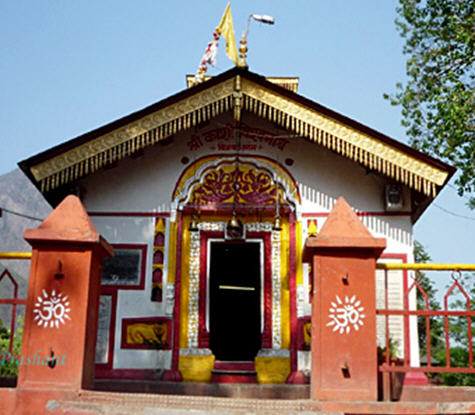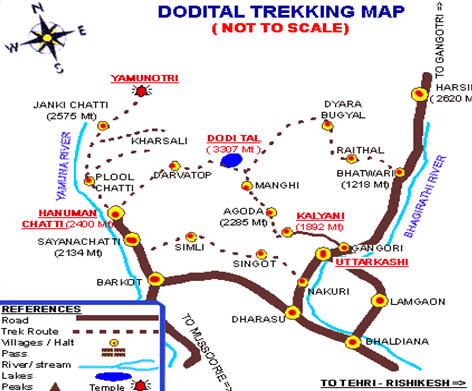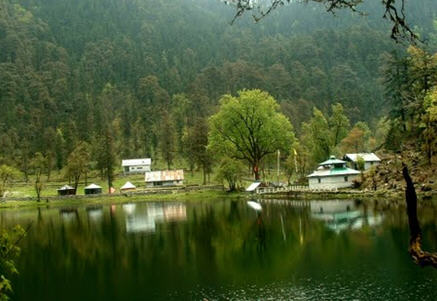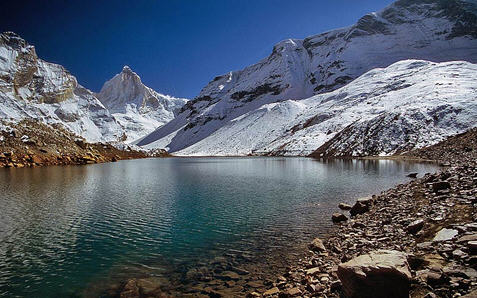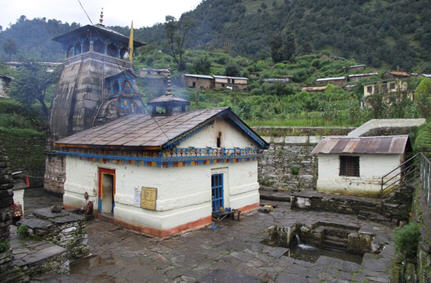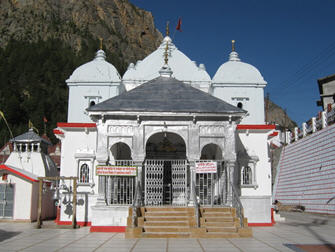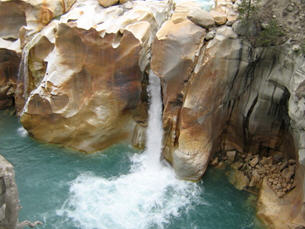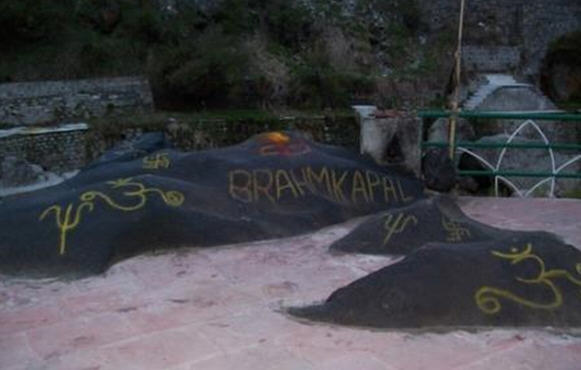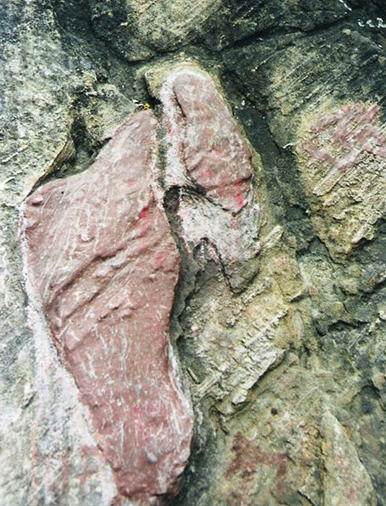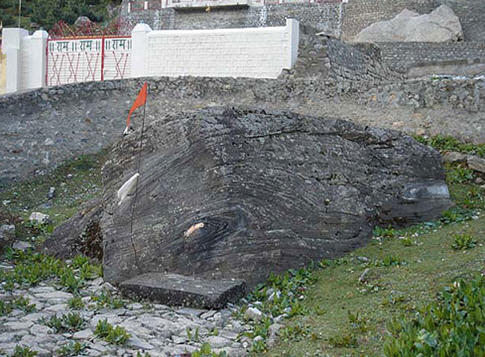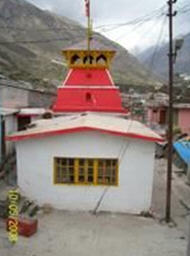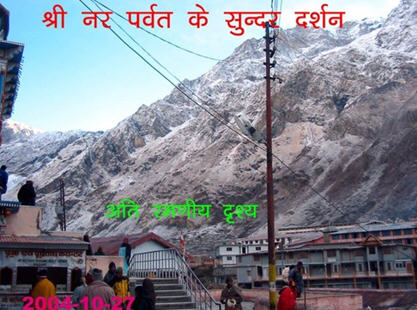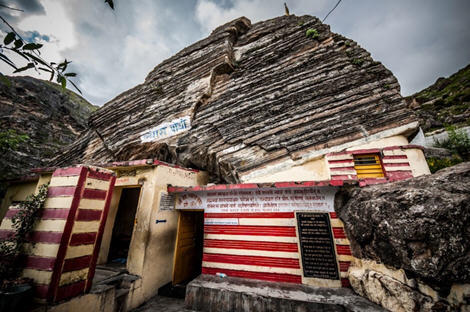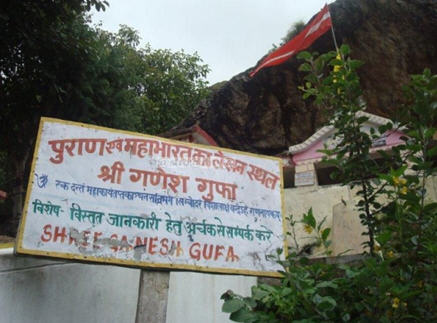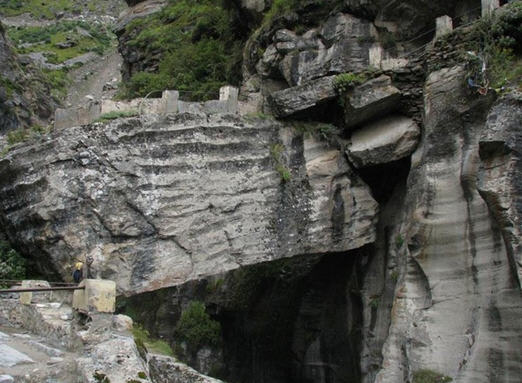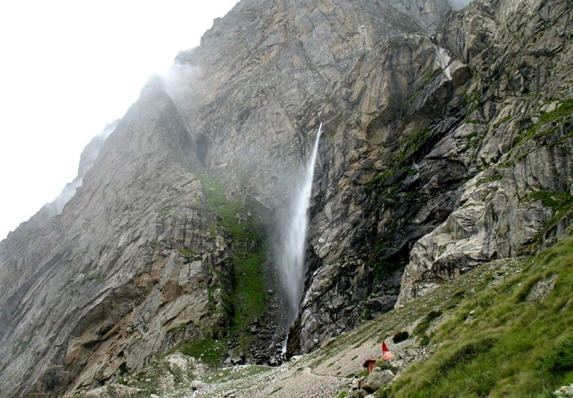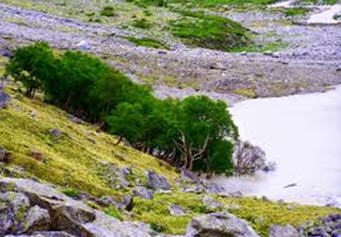a) How Lord Vishnu came to Badrinath.
Brahma Vaivarta Purana Brahma kanda 29 and 30 chapter contains the reason why Lord Narayan came to Badrinatha. The story begins with sage Narada requesting his Lord Narayan to perform his pastimes tapasya instead of his usual sleeping pastime Yoga Nidra . Happily, Lord Narayan made a plan and send Lakshmi devi to Nagaloka and then he left Vaikuntha to come to Badrinatha where Lord Shiva was residing. Lord Narayan came in the form of a child weeping. Parvati took compassion on the beautiful yet sorrowful child and brought him to their home. After some time the small child started crying again. Lord Shiva and Parvati thinking the child is hungry went to fetch something to appease his hunger. When both returned ,the child had locked the doors and smilingly said that now the home is his. Child requested them to relocate to another place. Understanding the child to be non different than Lord Narayan, Lord Shiva moved to Kedarnath. Not finding Lord Narayan in Vaikuntha ,Narada came to Badrinath in his search. He found Him in Badrinath performing dhyana. Narada asked Lord as to who is the object of his dhyana. Narayana replied that it was He Himself. He was setting an example for the world how one must perform meditation of Narayan.
b) Pastime of Nara Narayana Rsi & Dambodbhava
Parasurama was present at the court of the Kauravas when Sri Krsna was speaking to Dhrtarastra on behalf of the Pandavas. When the Kauravas did not reply the questions put by Sri Krsna, Parasurama rose up to tell a story to illustrate the evils resulting from the arrogance of man. There was once a King called Dambhodbhava who was very arrogant because of his great strength. He wanted to diffuse his energy by fighting and labored much to get good opponents and roamed about in search of fighters. One day the Brahmins directed him to Nara-Narayanas and accordingly Dambhodbhava went to their ashrama at Badarika and challenged them for a fight. They refused to fight and yet the King showered arrows on them. Then the sages took a few blades of the Kusa grass and threw them at him. These turned into great missiles filling up the entire sky. Horrified, the King begged to be pardoned and prostrated before the sages. They sent the befooled King back to his palace. (Chapter 96, Udyoga Parva).
c) The Birth of Krishna Dwaipayana Veda Vyasa
Satyavati was the daughter of Dashraja, a chieftain of a fishing community. It is said that he found the baby Satyavati inside a fish he had caught. Satyavati retained a fishy smell and was therefore also known by the derogatory name Matsyagandha or one who smells like a fish.
When she grew older, Satyavati took to ferrying pilgrims across the river Yamuna. Once she was taking the Sage Parashara in her boat. Parashara told her that she was destined to give birth to a very great person from their union. At first she objected stating that he was a Brahmin and that she a fisherman’s daughter. Understanding the divinity, She then placed three conditions before him. The first was that no one should be able to witness the union, so Parashara created an artificial mist around them. The second was that she should retain her virginity. Parashara assured her that after she gave birth she would again become a virgin. She wanted her fishy smell to be replaced by beautiful fragrance. Parashara agreed to this as well. He said that a divine aroma would emanate out of her, which could be sensed for a yojana, a distance equal to nine miles. She would then be known as Yojanagandha meaning one whose fragrance spreads for a yojana.
As union was divine, Satyavati conceived and immediately went into labor. Instantly on an island in the river she gave birth to a boy. The boy immediately grew up to become a man. He left his mother saying that whenever she would need him all she had to do was call and he would present himself. Since his complexion was dark he was called Krishna, which means dark. And since he was born on an island he was called Dwaipayana, from the word ‘dweep’ meaning island. Krishna Dwaipayana would later be known as Veda Vyasa, because he split the Vedas into four books.
d) Mucukunda Gupha (Cave): Kalayavana killed and Mucukunda liberated by Sri Krsna
King Kalayavana wanted to conquer Mathurapuri for which purpose he performed penance and secured from Siva the boon that none of the Yadavas would be able to kill him. Krsna had shifted Mathuravasis to Dvaraka, knowing that Kalayavana could not be killed because of the protection accorded by Siva’s boon. Another thing also happened at this juncture. King Mucukunda, son of Mandhata had on the request of Indra had gone to Devaloka and defeated the Asuras in war. Indra asked him to choose his reward for this service and Mucukunda wanted to be shown a place for him to sleep as he had not slept for a long time. Indra, accordingly showed him a cave on earth and told him that he who disturbed him in sleep would be reduced to ashes by his very glance. Mucukunda went to sleep in that cave.
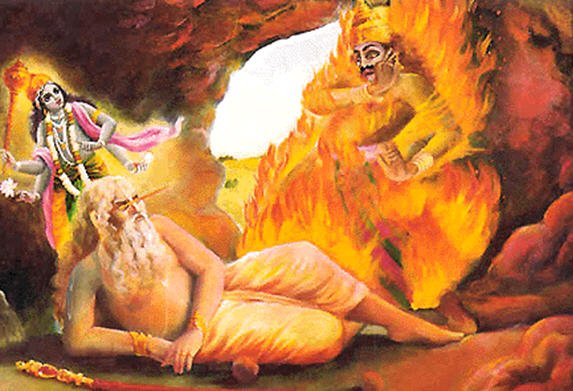
Kalayavana approached Krsna to kill him and the latter, pretending to be in fear of Kalayavana, ran away. Kalayavana followed Krsna, who entered the cave where Mucukunda was sleeping . Kalayavana followed Krsna into the cave also. Kalayavana, mistaking Mucukunda for Krsna, kicked him violently whereupon Mucukunda jumped up from sleep and looked at Kalayavana, who then was reduced to ashes as per the boon. Then Krsna appeared before Mucukunda and blessed him. On the advice of Krsna he left that cave and travelled to perform penance at Badarikasrama and attained salvation. (Bhagavata, 10th canto). His cave in Badrinath is still existing.
e) Ekadashi Gupha (Cave) at Badrinath
“Lord Shri Krishna replied to Arjuna’s query , ‘I will tell you why Ekadashi is the most purifying of all days. In the Satya-yuga there once lived an amazingly fearsome demon called Mura. Always very angry, he terrified all the demigods, defeating even Indra, the king of heaven; Vivasvan, the sun-god; the eight Vasus; Lord Brahma; Vayu, the wind-god; and Agni, the fire-god. With his terrible power he brought them all under his control.
“Lord Indra then approached Lord Siva and said, “We have all fallen from our planets and are now wandering helplessly on the earth. O lord, how can we find relief from this affliction? What will be the fate of us demigods?”
“Lord Siva replied, “O best of the demigods, go to that place where Lord Vishnu, the rider of Garuda, resides. He is Jagannatha, the master of all the universes and their shelter as well. He is devoted to protecting all souls surrendered to Him.”
“Lord Krishna continued, ‘O Arjuna, winner of wealth, after lord Indra heard these words of Lord Siva , he proceeded with all the demigods to the place where Lord Jagannatha, the Lord of the universe, the protector of all souls, was resting. Seeing the Lord sleeping upon the water, the demigods joined their hands and, led by Indra, recited the following prayers:
“O Supreme Personality of Godhead, all obeisances to You. O Lord of lords, O You who are praised by the foremost demigods, O enemy of all demons, O lotus-eyed Lord, O Madhusudana [killer of the Madhu demonl,please protect us. Afraid of the demon Mura, we demigods have come to take shelter of You. O Jagannatha, You are the doer of everything and the creator of everything. You are the mother and the father of all universes. You are the creator, the maintainer, and the destroyer of all. You are the supreme helper of all the demigods, and You alone can bring peace to them. You alone are the earth, the sky, and the universal benefactor.
“You are Siva, Brahma, and also Vishnu, the maintainer of the three worlds. You are the gods of the sun, moon, and fire. You are the clarified butter, the oblation, the sacred fire, the mantras, the rituals, the priests, and the silent chanting of japa. You are the sacrifice itself, its sponsor, and the enjoyer of its results, the Supreme Personality of Godhead. Nothing within these three worlds, whether movable or immovable, can exist independent of You. O Supreme Lord, Lord of lords, You are the protector of those who take shelter of You. O supreme mystic, O shelter of the fearful, please rescue and protect us. We demigods have been defeated by the demons and have thus fallen from the heavenly realm. Deprived of our positions, O Lord of the universe, we are now wandering about this earthly planet.”
“Lord Krishna continued, ‘Having heard Indra and the other demigods speak these words, Shri Vishnu, the Supreme Personality of Godhead, replied, “What demon possesses such great powers of delusion that he has been able to defeat all the demigods? What is his name, and where does he live? Where does he get his strength and shelter? Tell Me everything, O Indra, and do not fear.”
“Lord Indra replied, “O Supreme Godhead, O Lord of lords, O You who vanquish the fear in Your pure devotees’ hearts, O You who are so kind to Your faithful servants, there was once a powerful demon of the Brahman dynasty whose name was Nadijangha. He was extraordinarily fearsome and wholly dedicated to destroying the demigods, and he begot an infamous son named Mura.
“Mura’s great capital city is Candravati. From that base the terribly evil and powerful Mura demon has conquered the whole world and brought all the demigods under his control, driving them out of their heavenly kingdom. He has assumed the roles of Indra, the king of heaven; Agni, the fire-god; Yama, the lord of death; Vayu, the wind-god; Isa or Lord Siva, Soma, the moon-god; Nairrti, the lord of the directions; and Varuna, the watergod. He has also begun emanating light in the role of the sun-god and has turned himself into the clouds as well. It is impossible for the demigods to defeat him. O Lord Vishnu, please kill this demon and make the demigods victorious.”
“Hearing these words from Indra, Lord Janardana became very angry and said, “O powerful demigods, all together you may now advance on Mura’s capital city of Candravati.” Encouraged thus, the assembled demigods proceeded to Candravati with Lord Hari leading the way.
“When Mura saw the demigods, that foremost of demons started roaring very loudly in the company of countless thousands of other demons, who were all holding brilliantly shining weapons. The mighty-armed demons struck the demigods, who began abandoning the battlefield and fleeing in the ten directions. Seeing the Supreme Lord Hrsikesa, the master of the senses, present on the battlefield, the furious demons rushed toward Him with various weapons in their hands. As they charged the Lord, who holds a sword, disk, and club, Lord immediately pierced all their limbs with His sharp, poisonous arrows. Thus many hundreds of demons died by the Lord’s hand.
“At last the chief demon, Mura, began fighting with the Lord. Mura used his mystic power to render useless whatever weapons the Supreme Lord Hrsikesa unleashed. Indeed, to the demon the weapons felt just like flowers striking him. When the Lord could not defeat the demon even with various kinds of weapons whether those that are thrown or those that are held. He began fighting with His bare hands, which were as strong as iron-studded clubs. The Lord wrestled with Mura for one thousand celestial years and then, apparently fatigued, left for Badarikasrama. There Lord Yogesvara, the greatest of all yogis, the Lord of the universe, entered a very beautiful cave named Himavati to rest. “O Dhananjaya winner of wealth, that cave was ninety-six miles in diameter and had only one entrance. I went there out of fear, and also to sleep. There is no doubt about this, O son of Pandu, for the great fight made Me very tired. The demon followed Me into that cave and, seeing Me asleep, started thinking within his heart, “Today I will kill this slayer of all demons, Hari.”
“While the wicked-minded Mura was making plans in this way, from My body there manifested a young girl who had a very bright complexion. O son of Pandu, Mura saw that she was equipped with various brilliant weapons and was ready to fight. Challenged by that female to do battle, Mura prepared himself and then fought with her, but he became very astonished when he saw that she fought him without cessation. The king of the demons then said, “Who has created this angry, fearsome girl who is fighting me so powerfully, just like a thunderbolt faffing upon me?” After saying this, the demon continued to fight with the girl.
“Suddenly that effulgent goddess shattered all of Mura’s weapons and in a moment deprived him of his chariot. He ran toward her to attack her with his bare hands, but when she saw him coming she angrily cut off his head. Thus the demon at once fell to the ground and went to the abode of Yamaraja. The rest of the Lord’s enemies, out of fear and helplessness, entered the subterranean Patala region.
“Then the Supreme Lord woke up and saw the dead demon before Him, as well as the maiden bowing down to Him with joined palms. His face expressing His astonishment, the Lord of the universe said, “Who has killed this vicious demon? He easily defeated all the demigods, Gandharvas, and even Indra himself, along with Indra’s companions, the Maruts, and he also defeated the Nagas [snakes], the rulers of the lower planets. He even defeated Me, making Me hide in this cave out of fear. Who is it that has so mercifully protected Me after I ran from the battlefield and went to sleep in this cave?”
“The maiden said, “It is I who have killed this demon after appearing from Your transcendental body. Indeed, O Lord Hari, when he saw You sleeping he wanted to kill You. Understanding the intention of this thorn in the side of the three worlds, I killed the evil rascal and thus freed all the demigods from fear. I am Your great maha-shakti, Your internal potency, who strikes fear into the hearts of all Your enemies. I have killed this universally terrifying demon to protect the three worlds. Please tell me why You are surprised to see that this demon has been killed, O Lord.” “The Supreme Personality of Godhead said, “O sinless one, I am very satisfied to see that it is you who have killed this king of the demons. In this way you have made the demigods happy, prosperous, and full of bliss. Because you have given pleasure to all the demigods in the three worlds, I am very pleased with you. Ask any boon you may desire, O auspicious one. I will give it to you without a doubt, though it may be very rare among the demigods.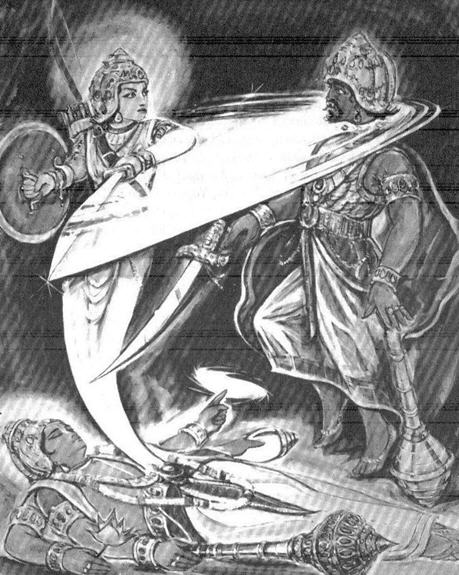
“The maiden said, “O Lord, if You are pleased with me and wish to give me a boon, then give me the power to deliver from the greatest sins that person who fasts on this day. I wish that half the pious credit obtained by one who fasts will accrue to one who eats only in the evening abstaining from grains and beans, and that half of this pious credit will be earned by one who eats only at midday. Also, may one who strictly observes a complete fast on my appearance day, with controlled senses, go to the abode of Lord Vishnu for one billion kalpas after he has enjoyed all kinds of pleasures in this world. This is the boon I desire to attain by Your mercy, my Lord. O Lord Janardana, whether a person observes complete fasting, eats only in the evening, or eats only at midday, please grant him a religious attitude, wealth, and at last liberation.”
“The Supreme Personality of Godhead said, “O most auspicious lady, what you have requested is granted. All My devotees in this world will surely fast on your day, and thus they will become famous throughout the three worlds and finally come and stay with Me in My abode. Because you, My transcendental potency, have appeared on the eleventh day of the waning moon, let your name be Ekadashi. If a person fasts on Ekadashi, I will burn up all his sins and bestow upon him My transcendental abode.
“These are the days of the waxing and waning moon that are most dear to Me: Trtiya [the third day], Astami [the eighth day], Navami [the ninth day], Caturdasi [the fourteenth day], and especially Ekadashi [the eleventh day]. “The merit one attains by fasting on Ekadashi is greater than that achieved by observing any other kind of fast or by going to a place of pilgrimage, and even greater than that achieved by giving charity to brahmanas. I tell you most emphatically that this is true.” “Having thus given the maiden His benediction, the Supreme Lord suddenly disappeared. From that time onward the Ekadashi day became most meritorious and famous all over the universe. O Arjuna, if a person strictly observes Ekadashi, I kill all his enemies and grant him the highest destination. Indeed, if a person observes this great Ekadashi fast in any of the prescribed ways,’ I remove all obstacles to his spiritual progress and grant him the perfection of life.
“Thus, O son of Prtha, I have described to you the origin of Ekadashi. This one day removes all sins eternally. Indeed, it is the most meritorious day for destroying all kinds of sins, and it has appeared in order to benefit everyone in the universe by bestowing all varieties of perfection.
“Whoever completely fasts on Ekadashi, following the rules and regulations, will achieve the supreme abode of Lord Vishnu, who rides upon Garuda. They are glorious who devote themselves to Lord Vishnu and spend all their time studying the glories of Ekadashi, One who vows not to eat anything on Ekadashi, but to eat only on the next day achieves the same merit as one who executes a horse sacrifice. Of this there is no doubt. Thus ends the narration of the glories of Margasirsa-krsna Ekadasi, or Utpanna Ekadasi, from the Bhavisya-uttara Purana.
f) Kubera Parvat, the source of Saraswati
Alakananda starts beyond Badrinath at Alakapuri, the kingdom of Lord Kubera. Once Kubera was invited to the chanting of mantras held by the Devas at Kusavati. Kubera was on his way to Kusavati with his associate Maniman. During the journey, they went past Agastya, who was performing penance on the banks of river Kalindi. Maniman spat on the head of Agastya. Agastya cursed them thus: “Oh Kubera, your attendant Maniman has insulted me. Therefore, even though you are Yakshas your army will be defeated by a Earthly man and Maniman will be killed. You will have to grieve over this . But, you will be absolved from this curse of mine just at the sight of the man, who will kill Maniman and army. Later Bhimasena, who went to mount Gandhamadana in search of the Saugandhika flower for Draupadi, killed Maniman and his soldiers because of this curse of Agastya. After killing Maniman, Bhima saw Kubera in person, and the latter got absolved from the curse. (Vana Parva, Chapter 161).
g) Dhruva Maharaja came to Badrinath
Dhruva Maharaja, at the end of his life, left his kingdom, which had extended all over the earth and was bound by the great oceans. Considering his body, his wives, his children, his friends, his army, his rich treasury, his very comfortable palaces and his many enjoyable pleasure-grounds to be creations of the illusory energy, he retired to the forest in the Himalayas known as Badarikasrama.
h) Nara Narayana Rsis humble lord Indra
Seeing the intense tapasya of Sages Nara Narayana, Indra was alarmed. Believing that their tapasya was for the attainment of Indrahood and fearing his own displacement, Indra went to Badarikasrama mounted on Airavata to break their tapasya, and told them thus: “Oh ascetics, who shine like the rising sun, I am pleased with your tapasya. You may choose any boon you like.” The Naranarayana’s did not even recognise the thunder like voice of Indra; nor did they answer him. This increased Indra’s alarm, and he decided to disturb them with Maya, productive of fear, desire etc. and thus break their tapasya. Indra began threatening them with cruel animals created by him like wild cat, leopard tiger, lion, elephant etc. and also with aberrations created in nature like storm, rain, wild fire etc. But, none of the above affected or moved them in the least. After all, why should they be moved? You would threaten only those who are subject to desires, love of comfort, any particular object in life or likes and dislikes. Since Naranarayanas had none of the above, Indra’s attempts to threaten them failed. Thus disappointed he returned to Svargaloka and after thinking for a long time he called Kamadeva to him and spoke as follows:-“You should go, along with Rati and the spring, to Badarikasrama. Also take with you any number of apsara women you want. You will find Naranarayana’s at the ashrama performing tapasya. Go and weaken them from their resolution by using your arrows (erotic shafts) and tempt them into erotic life. I am also deputing apsara women like Rambha to help you.’
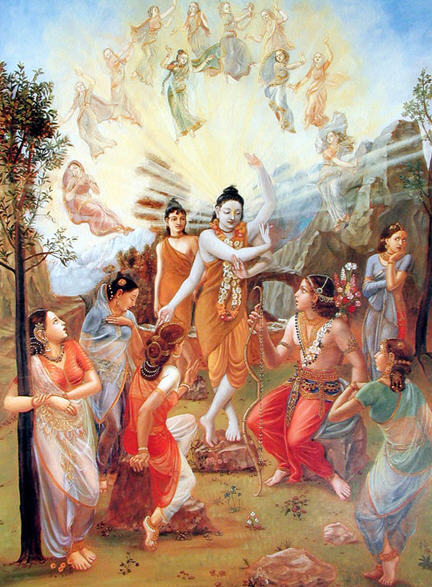
Kamadeva accordingly started for Badarikasrama accompanied by all the apsara women. When they reached the place, spring season had set in there. Varieties of bees flew about from flower to flower humming. Trees like the mango and Palasa were thick with flowers. A fragrant breeze swept the whole region. In this erotic background Kama and Rati, with their five arrows and accompanied by celestial women came to the ashrama, and there they began singing and dancing.Sage Narayana rsi awoke from his tapasya and whispered something in the ears of Nara. By now Kamadeva had entered the presence of Naranarayana’s accompanied by the reputed beauties of Svargaloka like Menaka, Rambha, Tilottama, Sukesini, Manorama, Mahesvari, Puspagandha, Pramadvara, Ghrtaci, Candraprabha, Somaprabha, Vidyonmala, Ambujaksi and Kancanamala. These beauties were accompanied by 10080 of their beautiful attendants. Naranarayana’s were wonder-struck to see this army of Kama. All those great beauties stood before Naranarayanas in salutation. Some of them began to sing, others to dance and yet others to take up the tunes. Sage Narayana rsi could easily divine the reason for the show. He thought to himself thus “None but Devendra could have sent all these people here, and his object must be to hinder our tapasya. But I shall prove to Indra that all these mean nothing to me. Let Devendra understand that I can create more beautiful ladies than these women of his here and that I am not in the least attracted by any of them here.”
Thinking thus Sage Narayana beat gently on his thigh and immediately arose therefrom, an exceptionally beautiful woman. Since that woman, the most beautiful in all the three worlds, was created from the Uru (thigh) of Narayana she came to be known as Urvasi. Others were wonder-struck by this new creation. He created some other beauties also, and an equal number of other women to serve them. All of these created beauties stood before him in humble salutation. The celestial women of Indraloka almost fainted with fear. In repentance they begged the munis to pardon for their mistake. The munis were kindly disposed towards them. They told them that they (munis ) cherished no animosity towards them, but in fact were pleased with them, and they further asked them (celestial women) to choose their boons. The munis also asked them to take Urvasi to Devaloka as a present from them to Indra. Let the Devas prosper. Having heard Nara speak like this, the celestial women returned in great humility to Devaloka with Urvasi and the other women. (Devi Bhagavata, 4th Skandha).
i) Tapta Kunda
Bhrgu had a greatly beloved wife, Puloma, in whom he conceived a son endowed with Bhrgu’s own potency. The child grew normally in the womb of Puloma, who was very respectable and religious wife and who always treated others fairly. Once Bhrgu, great among the upholders of virtue, left her at home and went out to perform a royal consecration. While he was away, a demoniac Raksasa also named Puloma came to his ashrama. When he entered the ashrama and behold the faultless wife of Bhrgu, the Raksasa was overwhelmed by lust and lost his mind.
Upon seeing the Raksasa arrive, the lovely Puloma welcomed him with typical forest fare like fruits and roots and other such eatables. But simply by looking at her, the Raksasa Puloma was excited and his heart was fully tormented by lust. He yearned to kidnap that faultless woman.
Noticing the sacrificial fire ablaze on the sacred ground, the demon asked the blazing fire, “Tell me, Agni, whose wife is this? I ask you on your honor, O Fire, for you are the emblem of truth. Speak the truth to one who so inquires. I believe this lady of lovely complexion to be the very woman I once chose as my wife. But her father gave her away to Bhrgu, who improperly accepted her. If this shapely woman, who stands alone here, is indeed Bhrgu’s wife, then you must declare it openly, for I wish to steal her from this ashrama. My heart has always burned with rage because Bhrgu took that lovely-waisted woman who was first meant to be my wife.”
The Raksasa was not sure if the woman was actually Bhrgu’s wife, and so again and again he entreated the blazing sacrificial fire, asking him the same question. “O Agni, you ever exist within all creatures as a witness to their piety and sin. O wise one, speak words of truth. Bhrgu falsely took away my intended wife, and if this is that same woman, then tell me so. You must declare the truth. As soon as I hear from you that she is truly Bhrgu’s wife, I shall take her from this ashrama before your very eyes, my dear sacred Fire. Now speak the truth!”
Afraid to speak a lie, and fearing too of Bhrgu’s curse, Fire began to speak, slowly and carefully, revealing the identity of Bhrgu’s wife.[Although the demoniac Raksasa insisted that Agni speak the truth, he himself cared nothing for Vedic principles and considered his own selfish will to be the highest law.]
Suta Goswami said: Upon hearing Agni’s statement the demon assumed the form of a huge boar and seized Bhrgu’s wife with the speed of the mind and the strength of the wind. But as soon as he grabbed Puloma, the child rolled furiously out of her womb and thus became known as Cyavana, “the one who came forth.” Simply seeing this powerful child rush forth from his mother’s womb, the Raksasa burst into flames. Releasing Bhrgu’s wife, he fell to the ground and burned to ashes.
Shocked and aggrieved by this incident, the shapely Puloma quickly picked up Bhrgu’s beloved child and ran. Lord Brahma himself, the grandfather of all the worlds, witnessed Bhrgu’s faultless wife crying out, her eyes filled with tears, and he began to comfort that chaste young lady, whose teardrops, as they issued forth, formed a great river that followed her path.
Thus Cyavana, the powerful son of Bhrgu, was born. Upon seeing his son Cyavana and his furious wife, Bhrgu too became angry and asked his faithful Puloma, “When that Raksasa decided to steal you, who told him your name? O sweet-smiling one, the demon surely did not know that you were my wife. Tell me the truth. Who revealed your identity? My anger is such that I wish to curse him this very moment! Who is that person who does not fear my curse? Who committed this offense?”
Puloma said: My lord, it was Agni who surrendered me to the Raksasa. As I cried out like a kurari bird, the Raksasa led me away. I was saved only by this son of yours. By his power, the demon let go of me as he burned to ashes and fell dead on the earth.
Suta Goswami said: Hearing this from Puloma, a terrible wrath took hold of Bhrgu Muni, and he cursed Agni, the god of fire, declaring, “You, Fire, shall eat all things”. Cursed by Bhrgu, Agni too grew angry, and spoke these words: “Brahmana! Why have you committed such a reckless act against me, when I strove to follow the law and spoke the truth impartially? When questioned, I spoke the facts. What, then, is my crime? A witness who knowingly speaks lies when questioned ruins seven generations of his family, past and future. And one who knows the truth in a matter of duty, and even knowing does not speak, is tainted by that very sin (of duplicity) without a doubt. “I also have the power to curse you, but I am bound to honor brahmanas. Although you already know it, I shall clearly explain the situation. Please listen carefully, “By my mystic potency I divide myself into many flames, and thus I am present in various forms of religious sacrifices, such as the Agni-hotra, Satra, Makha, and in other rituals and ceremonies. Thus even the demigods and forefathers are satisfied by offerings of clarified butter consumed within my flames, following the Vedic rites.
“All the hosts of demigods and forefathers are venerable authorities in this world. Thus religious offerings on the new moon and full moon days are meant for both the gods and the forefathers, for they are generally worshiped as one, but are worshiped separately on the moon days. And even the demigods and forefathers always make offerings through me, hence I am considered to be the mouth of the thirty principle demigods and the forefathers. ‘”The forefathers are offered sacrifice on the new moon day, and the demigods on the full moon day, and through my mouth they consume offerings of clarified butter. How, then, can my mouth eat all things, clean and unclean?”
Reflecting on the matter, Agni withdrew himself from all the obligatory religious sacrifices and rituals, including the Agni-hotra. There was thus no chanting of the sacred Om, Vasat, Svadha, and Svahaa transcendental sound or Vedic hymn. And thus without Agni all creatures became very aggrieved. The sages, who grew very disturbed, then went to the demigods and spoke: “Now that fire is lost, religious processes have collapsed, and thus the three worlds, blameless in this matter, are faffing to ruin. Do what needs to be done while we still have time.” The sages and gods then approached Lord Brahma and delivered the news of the curse on Agni and his withdrawal from religious ceremonies. “O exalted one,” they said, “Bhrgu has cursed Agni without reason. How can Agni, the mouth of the demigods, be cursed to eat all things? It is Agni who eats the first portion of that which the whole world offers in sacrifice.”
Hearing their speech, Brahma, the creator, called Agni and spoke to him these gentle and immortal words, meant for the welfare of the world: “You are the fountain of all planets and You are their end. You sustain the three worlds and set the sacred rites in motion. O lord of the world, please act so that religious ceremonies are not cut off. Being a universal controller and the consumer of sacrificial offerings, why should you now be so confused? You represent purity in this world, and you pervade all creatures. You shall not eat all things with all your bodies. In your manifestation as a gross material ingredient, O blazing lord, your flames will burn all things. But as the sun purifies all things by the touch of its rays, similarly all that you burn by your flames shall become pure.
“O Fire of awesome potency, with that same potency, please make the sage’s curse come true, O mighty one. Accept and consume the demigods’ portion and your own when properly offered through your mouth in sacrifice.”
“So be it!” replied Agni to the grandsire, and he departed to execute the instruction of the supreme demigod.
The gods and sages happily departed, and all the sages began to perform the essential religious processes, just as they had before. The gods in heaven and all the earthly communities rejoiced. And Agni, his impurity cleansed, experienced the greatest happiness. Such is the very ancient history that arose from the cursing of Agni, the destruction of the demon Puloma, and the birth of the sage Cyavana. It is said that pleased with Agni dev ‘s (Fire God’s) penance, Lord Vishnu had granted him a boon to permanently reside in the form of this kund here and burn away the sins of all His devotees.
